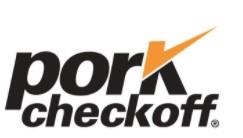In 2022, the National Pork Board will focus on five goals, which are all based on strengthening collaboration with partners across the industry.

1. Support a Coordinated National Strategy for FAD Prevention and Preparedness
This year, the Pork Checkoff will focus on providing the necessary research and resources to support this coordination. The key will be the adoption of AgView, which is a free, pig contact-tracing platform developed for producers using Pork Checkoff funds.
2. Expand on Real Pork Trust and Image Brand
Last year, we had success showing ground pork as a great alternative to other items in the meat case. We also had great success reaching consumers across the country through our Rural Dictionary Mythbusting campaign. This year, we’re going to expand on that success into e-commerce and drive home our mythbusting efforts.
3. Establish U.S. Pork as a Global Leader in Sustainable Ag
This month, we’ll release a national pork industry sustainability report introducing 12 goals and metrics by which the goals will be measured, all grounded in the 6 We Care® ethical principles. All pork producers are encouraged to get involved in on-farm sustainability reports. This will enable NPB to help tell your story.
4. Continue Grassroots Engagement with the States
State associations are key to the pork industry's success. Last year, NPB worked with states on grants, environmental questions, foreign animal disease prevention and preparedness and consumer outreach efforts. The board of directors was so pleased, they have allocated $1.5 million in 2022 to take that even further.
Click here to see more...